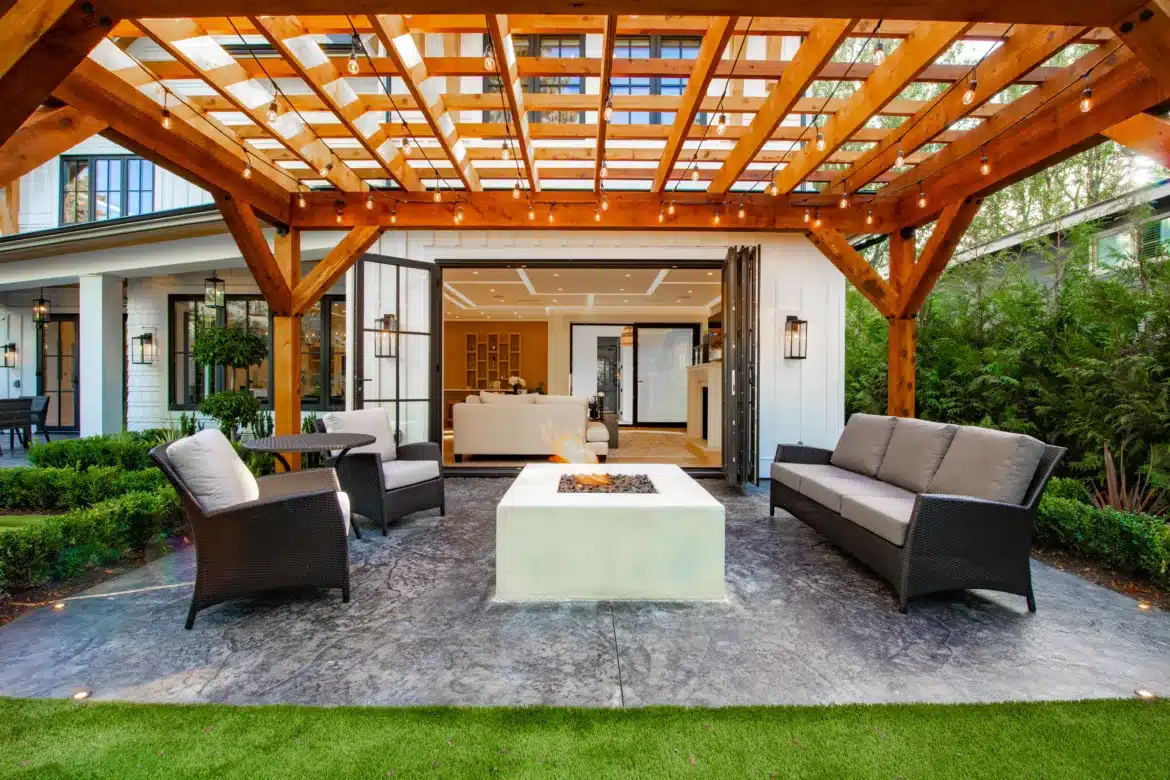In our ceaseless quest for balance and well-being, the significance of our immediate environment cannot be overstated. At the intersection of design and the great outdoors lies the practice of landscape architecture – a discipline that goes far beyond just greenery and aesthetics. It’s about crafting spaces that resonate with our deepest human needs, enabling serenity, interaction, and a sense of belonging.
In this comprehensive exploration, we will uncover the wonders of integrating landscape architecture into everyday living, not just as a design flourish but as a catalyst for physical, mental, and even environmental health. Here’s how you, the mindful homeowner, can transform your outdoor space into a sanctuary that nurtures the soul.
Understanding the Essence of Landscape Architecture
At its heart, landscape architecture is the art of shaping the outdoor environment to meet specified objectives. These can be as varied as creating a communal space that promotes interaction or designing a private refuge for contemplation. Through the strategic placement of elements, the use of natural materials, and an eye toward sustainability, a skilled landscape architect can refract the architectural themes present indoors to the outside world, unifying the entire living space.
The Role of Landscape Design in Holistic Health
Research indicates that access to green spaces can dramatically impact physical health. Just a brief stint in a natural environment can reduce stress levels, enhance immune function, and lower blood pressure. This insight has profound implications for landscape design, motivating a shift from ornamental gardens to functional, therapeutic spaces.
Ecosystems, Edges, and Well-being
The concepts of ecosystems and edges are fundamental in landscape design. By crafting transitional areas between different parts of the environment—between the garden and the forest, for example—a skilled architect can stimulate interest, encourage exploration, and support a diverse range of plant and animal life.
The Psychology of Outdoor Environments
Human psychology is inextricably linked to the spaces we inhabit, influencing our moods, behavior, and overall mental well-being. A well-designed outdoor area capitalizes on these principles, creating a dynamic relationship between the architecture, the inhabitants, and the natural world.
Biophilic Design in Action
Biophilic design, a burgeoning field within landscape architecture, seeks to intensify our connection to nature. This approach might integrate elements such as water features, natural lighting, and native plants, all of which have been shown to improve cognitive function and creativity.
Retreats and Reflection
For many, the garden is a place of solace, offering a retreat from the clamor of daily life. Strategic use of hedges, trellises, and pathways can create intimate spaces where one can reflect or meditate, fostering a sense of privacy and tranquility.
Elements of a Harmonious Outdoor Space
To create a truly nurturing environment, one must consider the interplay of various elements. Each detail, from the selection of the ground cover to the layout of the seating areas, should be thoughtful and intentional, contributing to the overall harmony and efficacy of the design.
The Healing Power of Water
Water is universally associated with tranquility and is a potent element in any landscape. It provides a focal point, a soothing soundtrack, and a reflective surface, awakening a sense of wonder and connection with the larger world.
Color, Texture, and Form
The visual aspects of a landscape are its most immediate and accessible qualities. Here, landscapes can emulate the intricacies of an artwork, playing with a palette of colors that follow the seasons, textures that beg to be touched, and forms that hint at the passage of time.
Engaging with the Landscape Throughout the Seasons
A well-designed outdoor space should be a dynamic entity, changing with the cycles of nature and the evolving needs of its occupants. Thoughtful architecture facilitates this metamorphosis, aligning with the underlying rhythms of the world.
Seasons as Design Guides
Each season offers unique characteristics that can inform the architecture of the outdoor space. From the fiery hues of autumn to the rebirth of spring, the landscape acts as a living canvas, mirroring and magnifying the emotional tides within us.
Adaptable Spaces
The ability to adapt is a virtue in both nature and design. Smartly engineered outdoor spaces are flexible, capable of hosting a moonlit soiree one night and a sun-dappled reading nook the next. Modularity is key, allowing for a pragmatic yet innovative response to the changing needs of the family.
Sustainability and Stewardship
Landscape architecture is not merely about serving the owner; it’s also about serving the planet. The sustainable practice of landscape design ensures that the well-being achieved within the sanctuaries extends to the broader environment.
Plants and Practices
The selection of plants and the methods of maintenance can greatly reduce the ecological footprint of a landscape. Drought-resistant species, for instance, reduce the need for water; while organic gardening techniques minimize the use of harmful chemicals.
Integration and Education
Landscape architects can educate homeowners about the benefits of sustainable practices and encourage them to become stewards of their land. By integrating features like composting areas or wildlife habitats, the landscape becomes an active participant in a global conservation effort.
Case Studies in Tranquil Transformation
Finally, we will examine real-life examples of how landscape architecture has been deployed to enrich lives. From rooftop gardens that revitalize city-dwellers to suburban oases that foster community, these case studies illustrate the remarkable versatility of the practice.
A Tapestry of Textures in Urban Retreats
In dense urban environments, space is at a premium; yet, some of the most innovative uses of landscape design have emerged from these constraints. By layering different textures, materials, and plantings, architects have transformed drab rooftops and courtyards into lush, multi-sensory escapes.
Encouraging Play in Natural Playgrounds
The concept of the playground undergoes a renaissance when approached through the lens of landscape architecture. Natural materials and organic forms encourage imaginative play while promoting physical activity and connection with the earth.
Conclusion: Your Journey Begins With a Single Step
For the homeowner looking to enrich their life through outdoor design, the prospects are as expansive as the sky above. By engaging with the principles of landscape architecture, you can create a space that is not only beautiful but also a powerful adjunct to your well-being. The path to personal transformation begins with the choice to step outside – and with the right design, your outdoor sanctuary can be a starting point for a lifetime of discovery and growth. Whether you’re cultivating a single verdant corner or overseeing the construction of a comprehensive landscape plan, remember that every decision, no matter how small, has the potential to promote harmony within and without. It’s time to bring the wisdom and wonder of the great outdoors into the heart of your home, and into your heart as well.



